In the exhilarating clash between Newcastle and Manchester City(13/1 – 2024), the tactical intricacies unfolded on the pitch, leaving football enthusiasts captivated by the strategic battles. This article delves into a comprehensive tactical analysis of the electrifying encounter, dissecting the strategies employed by both teams. From formations to key player movements, we unravel the chess match that transpired during this compelling fixture.
Newcastle
Build-up
In the build-up, Newcastle set up in their usual 1-4-3-3 formation, rotating into a 1-3-4-3 as they progressed the ball up the pitch:
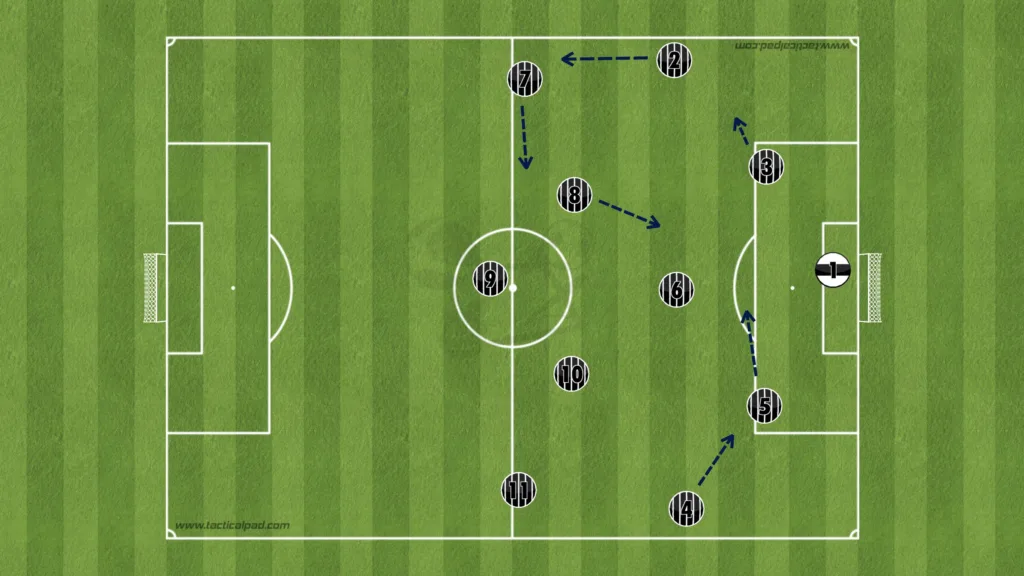
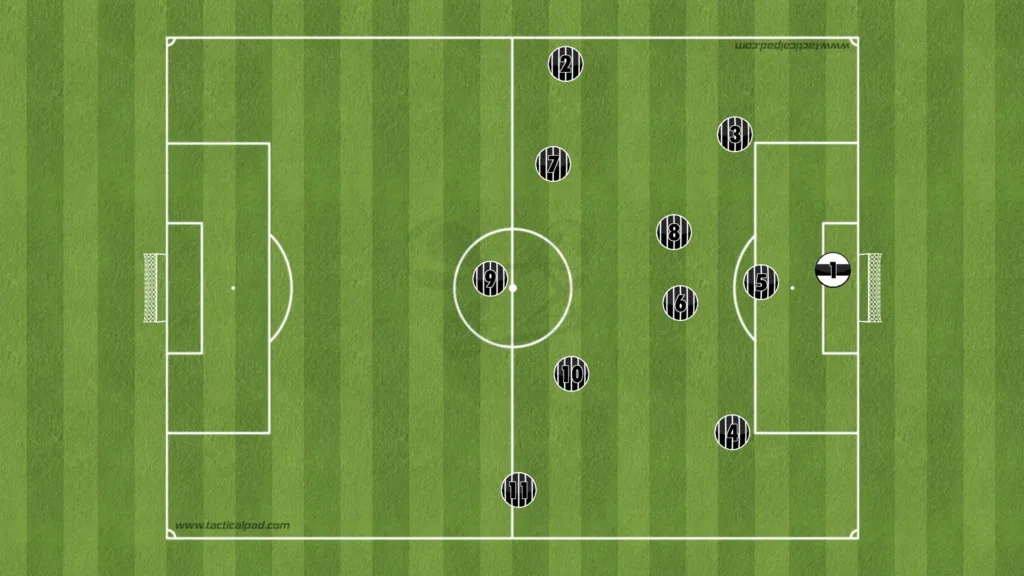
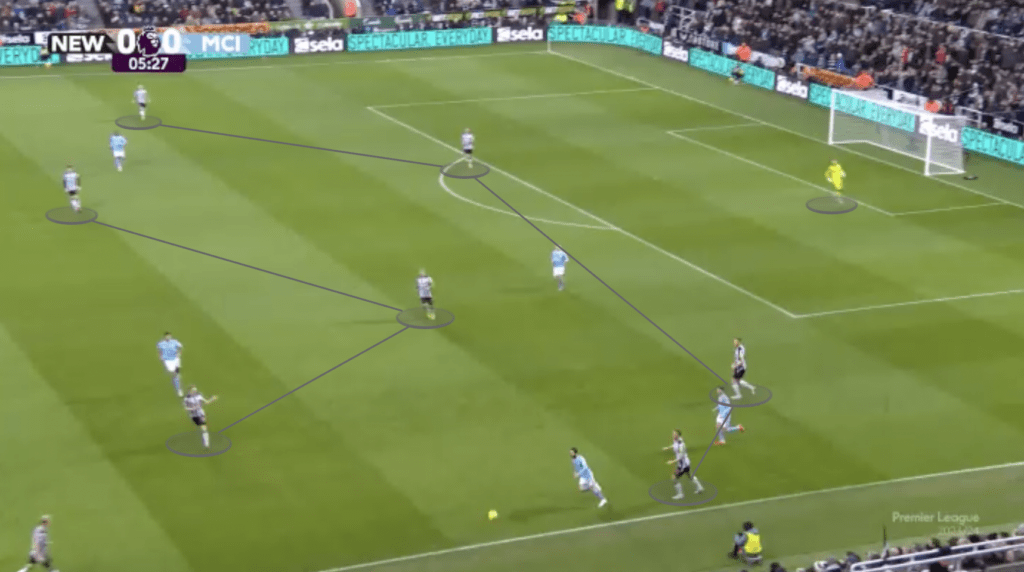
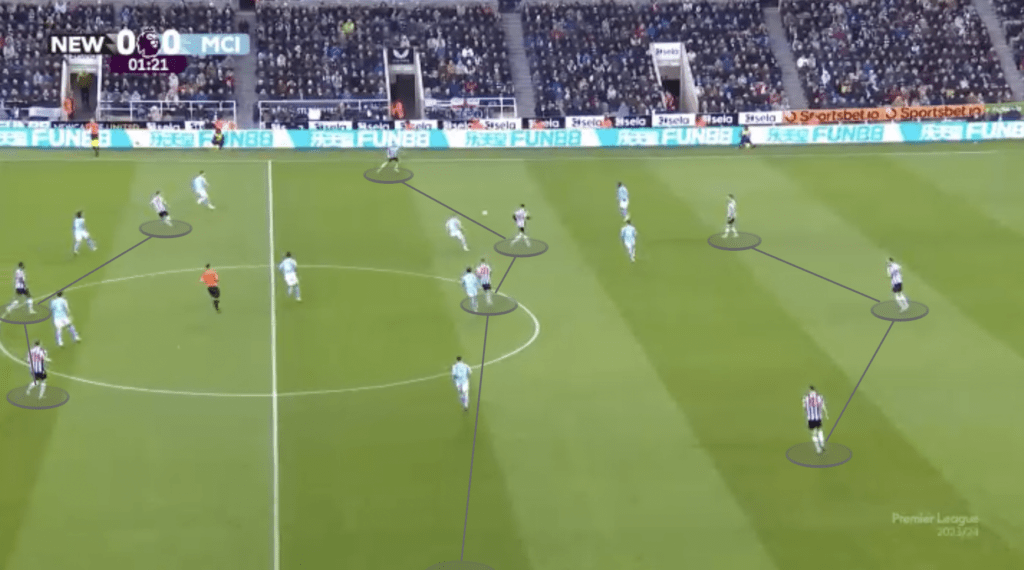
Newcastle rarely found themselves in the build-up phase, and when they did, they would often try to find the fast through ball in behind the high City backline.
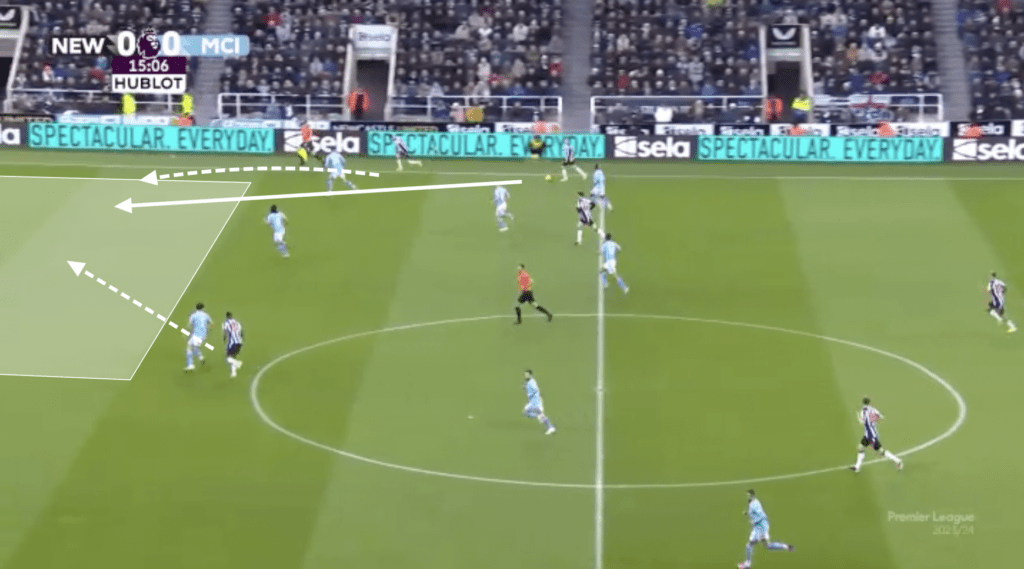
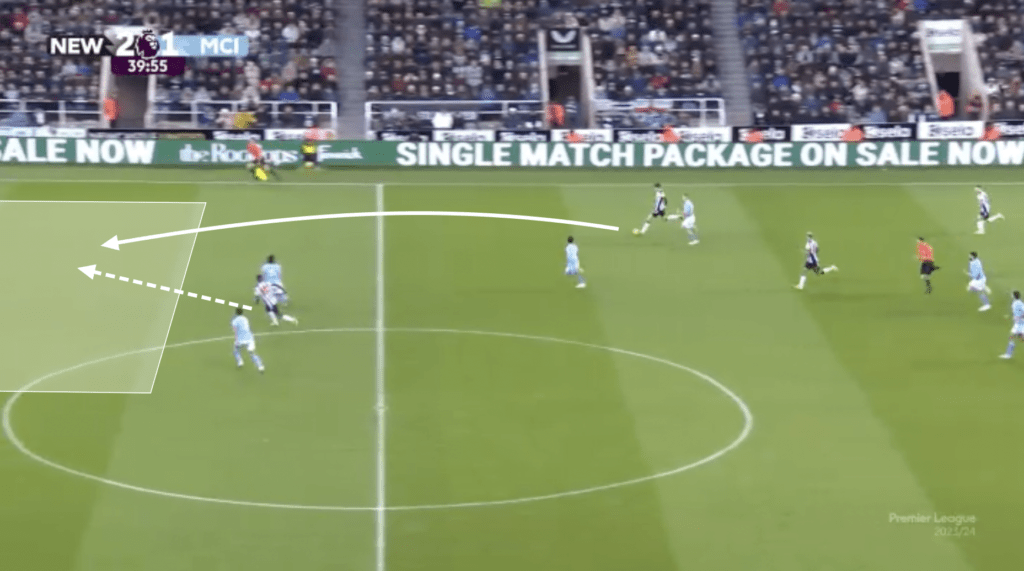
Sometimes, Doku would push up and press Schar, leaving Trippier open. This would force Gvardiol to push on him. Almiron would then make a wide run, forcing Ake to leave his center-back to follow the run. This left Dias and Walker 2 v 3 against the rest of Newcastle‘s forward line which could have caused problems for Man City
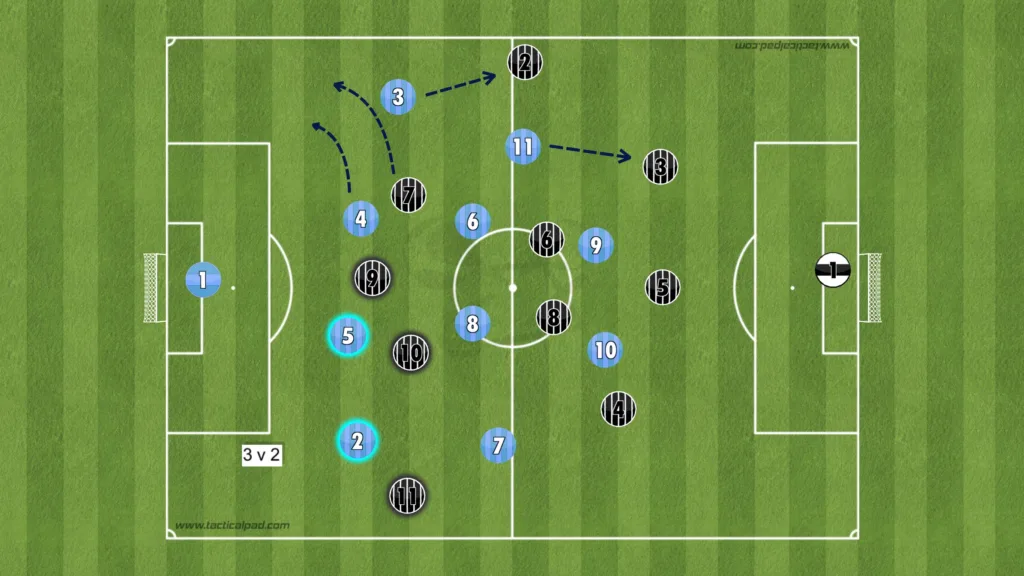
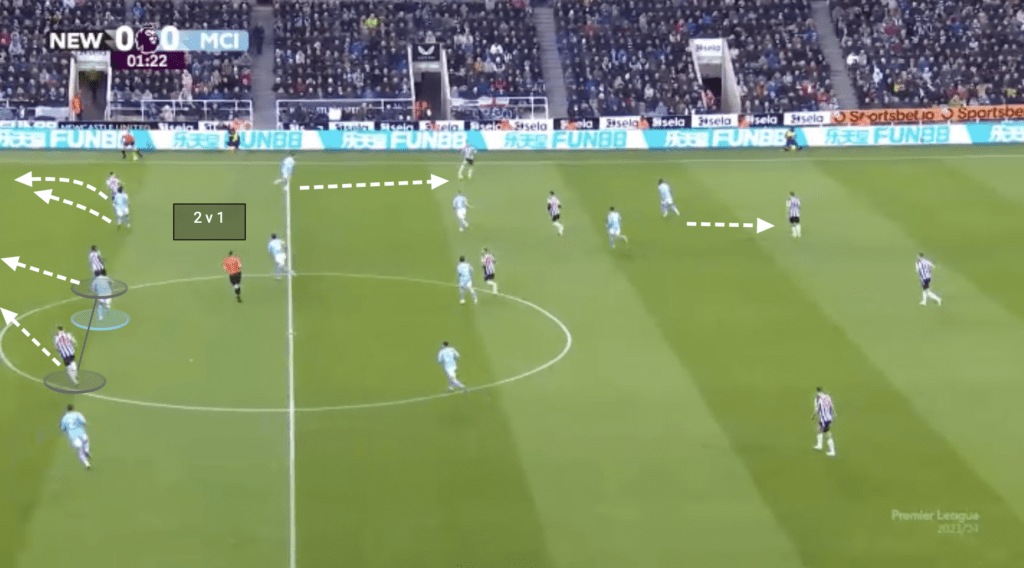
Low Press
Newcastle are superb in the low press and extremely hard to break down. They use a 1-4-5-1 formation with a flat midfield:
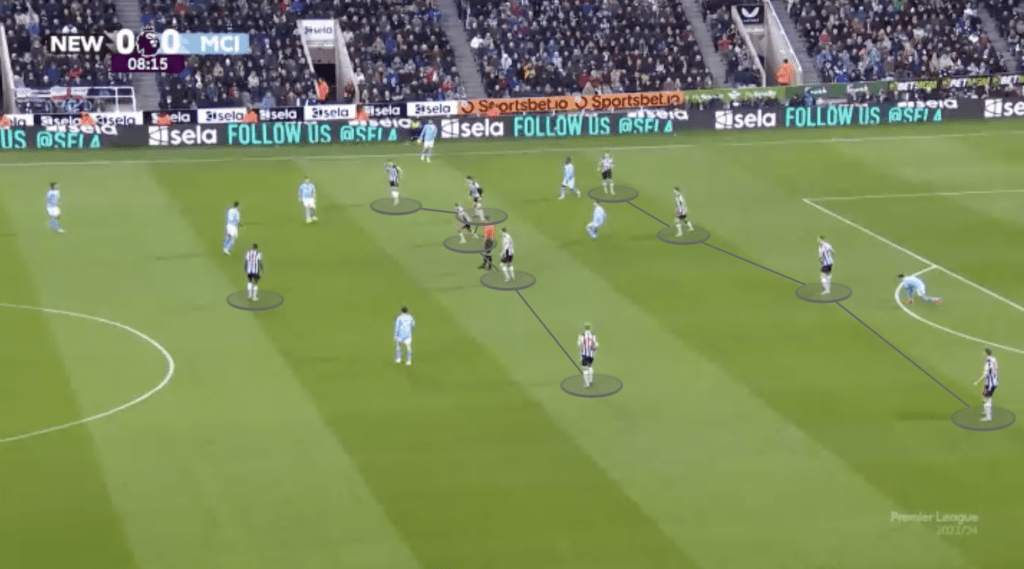
Eddie Howe’s team worked extremely hard and always stayed compact, making it difficult for Man City to break through and create chances.
High press
Newcastle tried to push up and pressure Man City whenever they could and did so successfully during the game. They would go into a man-man system and press with high intensity, sometimes winning the ball in dangerous areas:
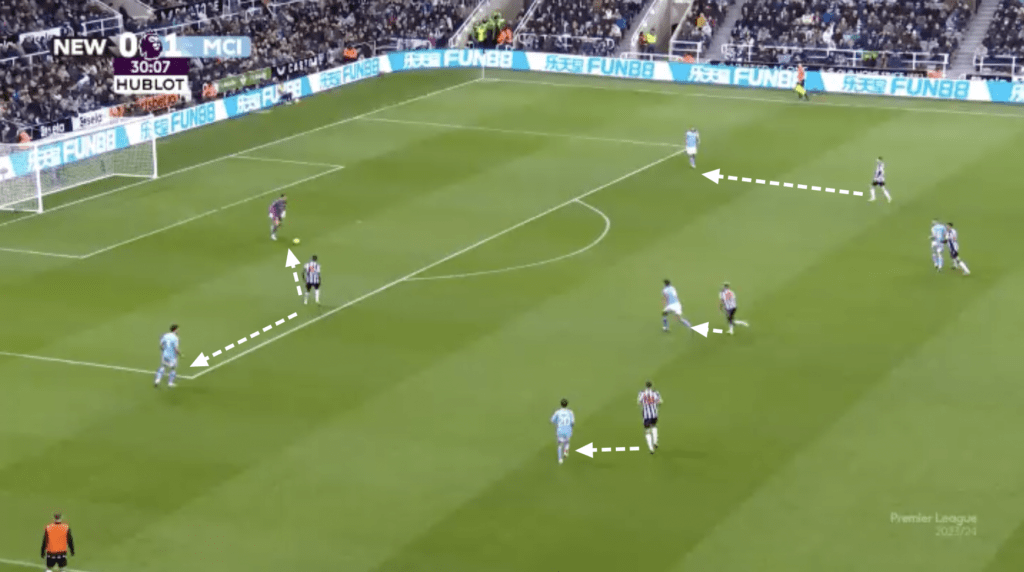
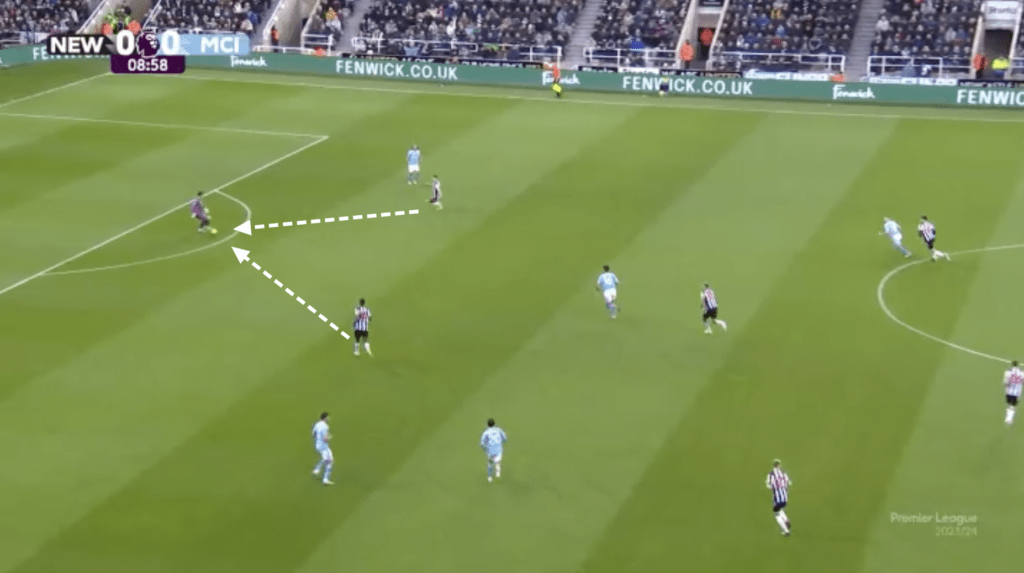
From the Man City goal kick, Newcastle lined up in their usual 1-4-3-3 high-pressing formation, with the wingers centrally. As soon as the goalkeeper played the ball, Newcastle would press furiously, often forcing Man City to go long.
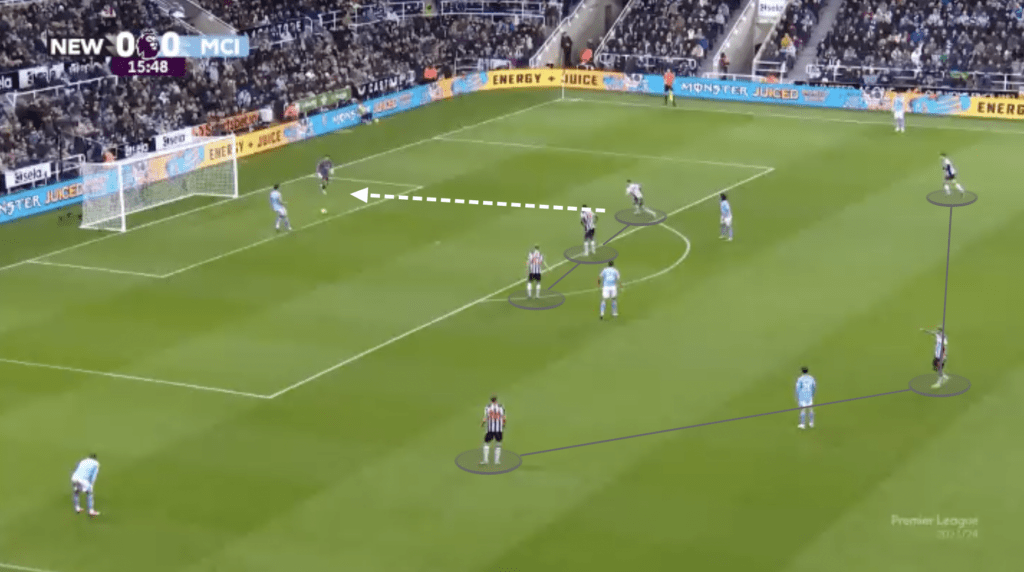
Transitions
Newcastle only created chances from offensive transitions, scoring from two counterattacks. They would, instantly after gaining possession, look to play a fast ball in behind the City backline. Newcastle struggled with this during long parts of the game because of City’s counter-press. However, between minutes 30 and 40, Man City’s defensive transitions were poor, allowing Newcastle to counterattack and score two goals.
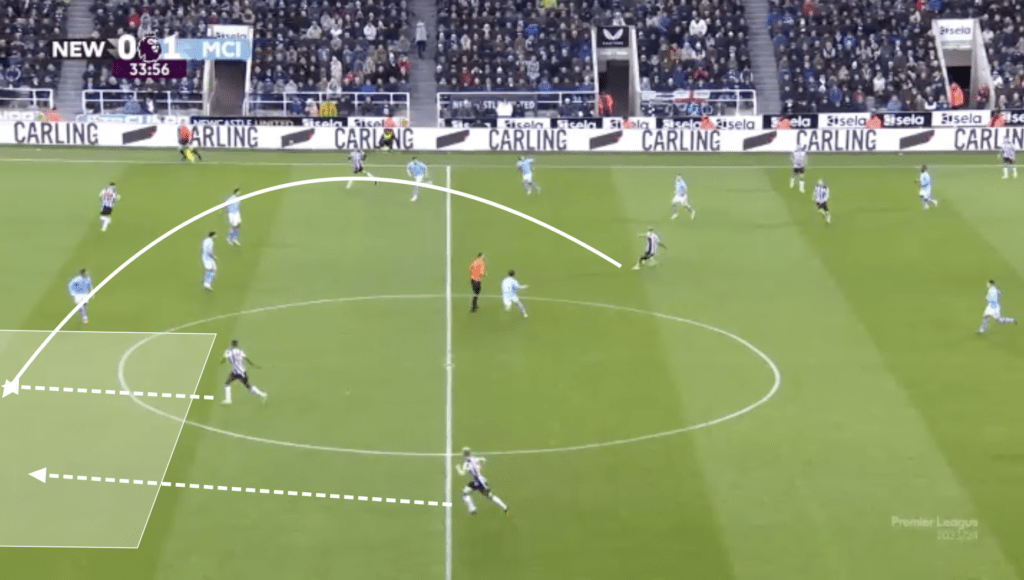
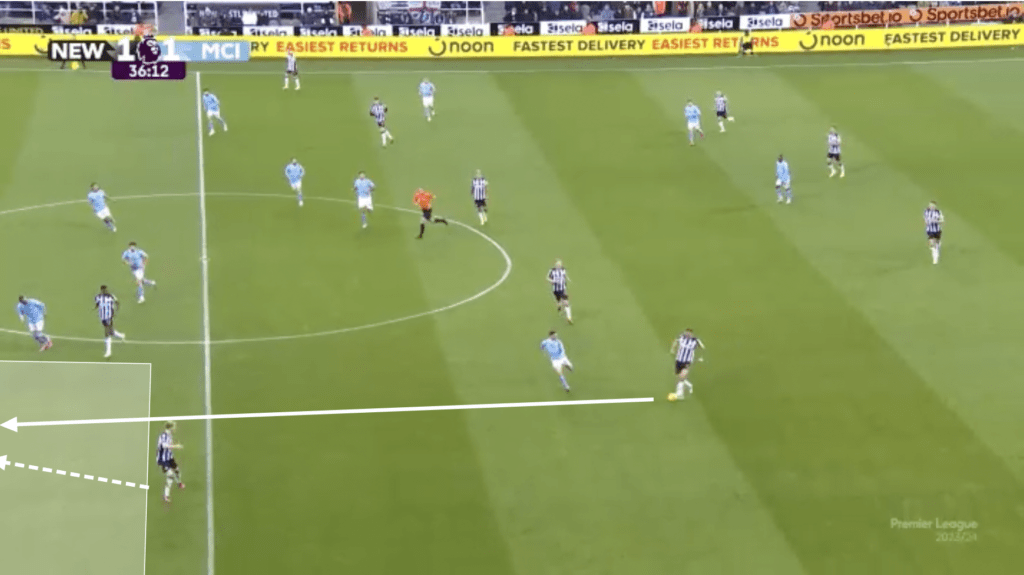
Issues
Newcastle‘s biggest issue during the game came with the ball. They always had to defend, and when they won the ball, Man City would usually win it back immediately. This forced them to always be in their low press, allowing City to attack with the ball close to Newcastle’s goal. Newcastle are good in the low press, but holding off Man City for 90 minutes when only defending is almost impossible. City would sometimes break through and find passes, breaking the midfield line of Newcastle and finding Foden and Doku in the pockets.
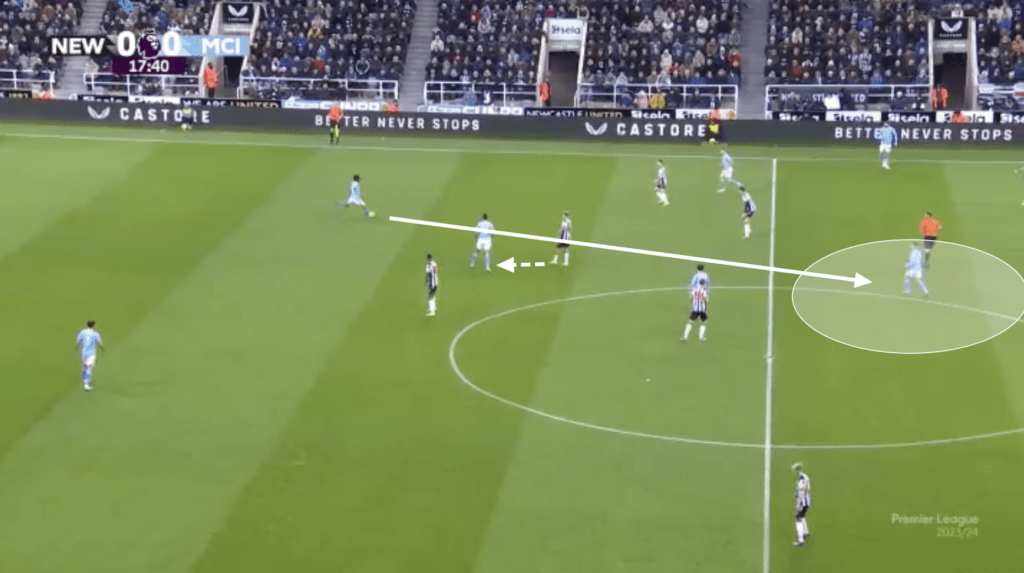
Man City
Low Build-up
In the low build-up, Man City used a 4-2-2-3 formation, with the goalkeeper acting as a center-back. This meant that they were numerically superior in the midfield, often allowing them to win the second balls when Newcastle’s high press forced them to go long. From there, Pep Guardiola’s team would recycle the ball and begin with high build-up.
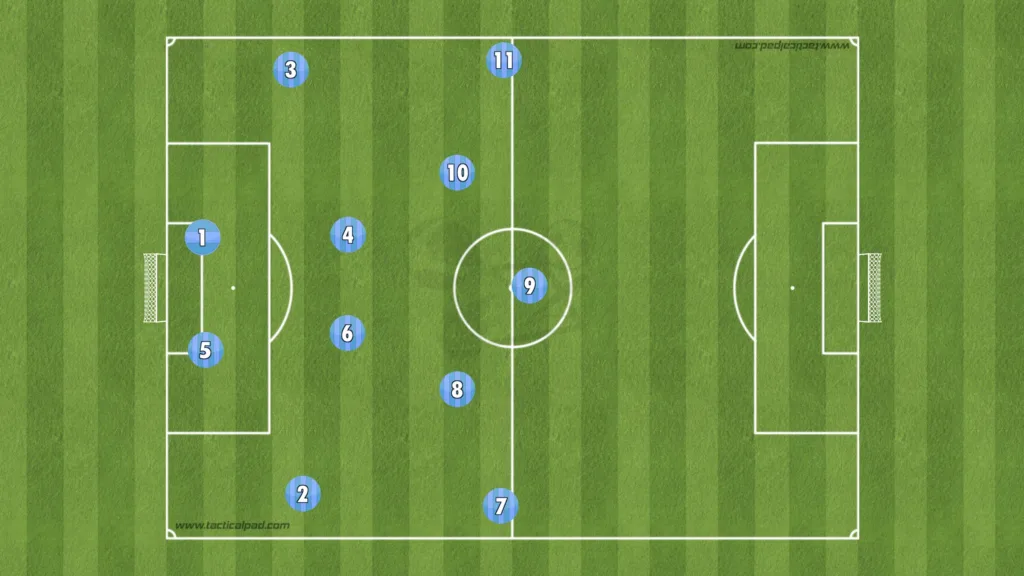
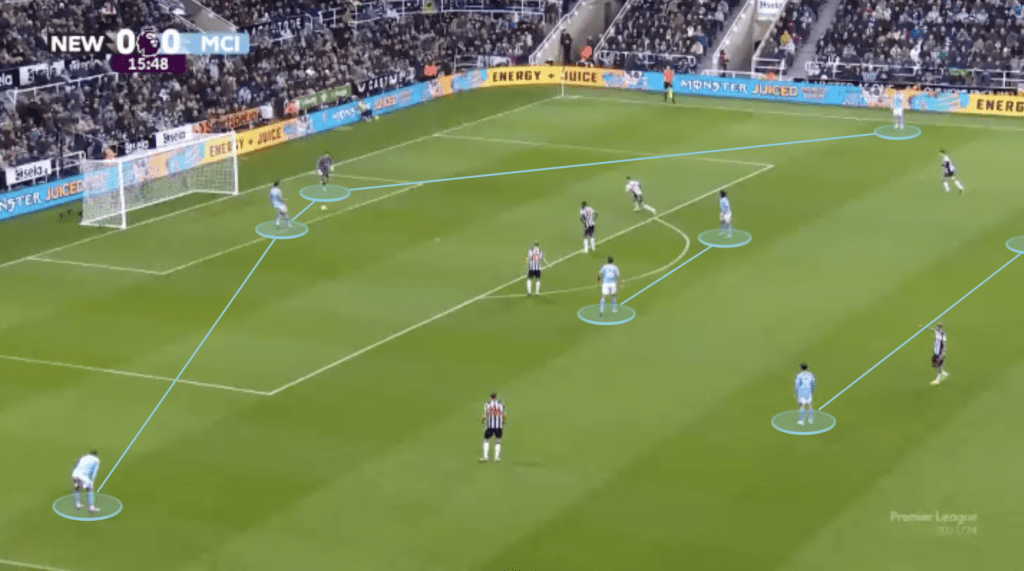
Man City would also, as usual, beat the first line of press using the third-man concept.
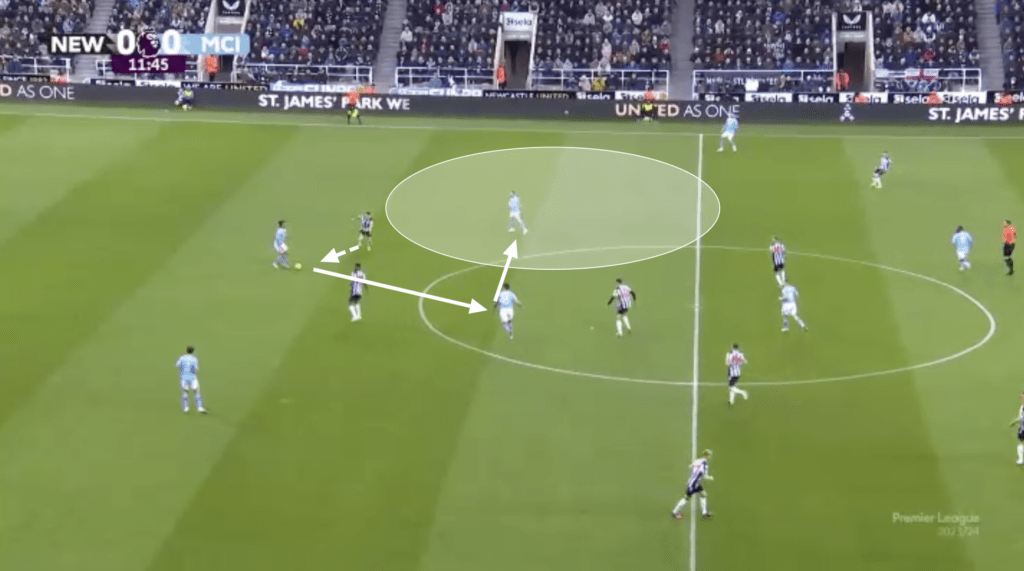
High Build-up
In the high build-up, Man City would rotate into a 1-2-5-3 formation, pushing the fullbacks up, dropping with Bernardo Silva, and positioning Foden and Doku between the backline and midfield-line of Newcastle. This meant they had five players in the midfield, creating a numerical advantage against Newcastle‘s midfield three.
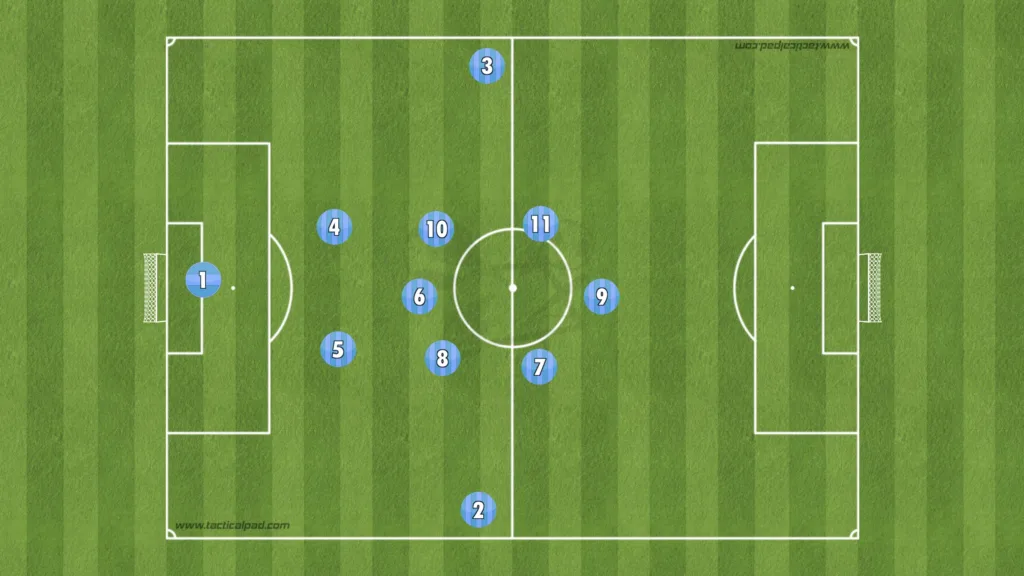
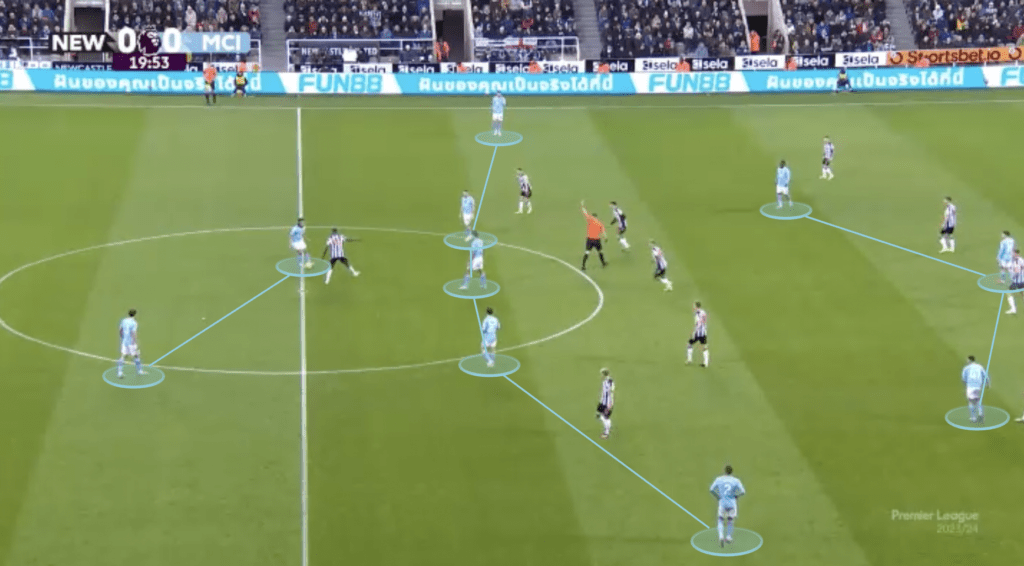
Man City often had great success in beating the low block of Newcastle, finding Foden and Doku behind the midfield line of Newcastle. They did this primarily through different third-man combinations.
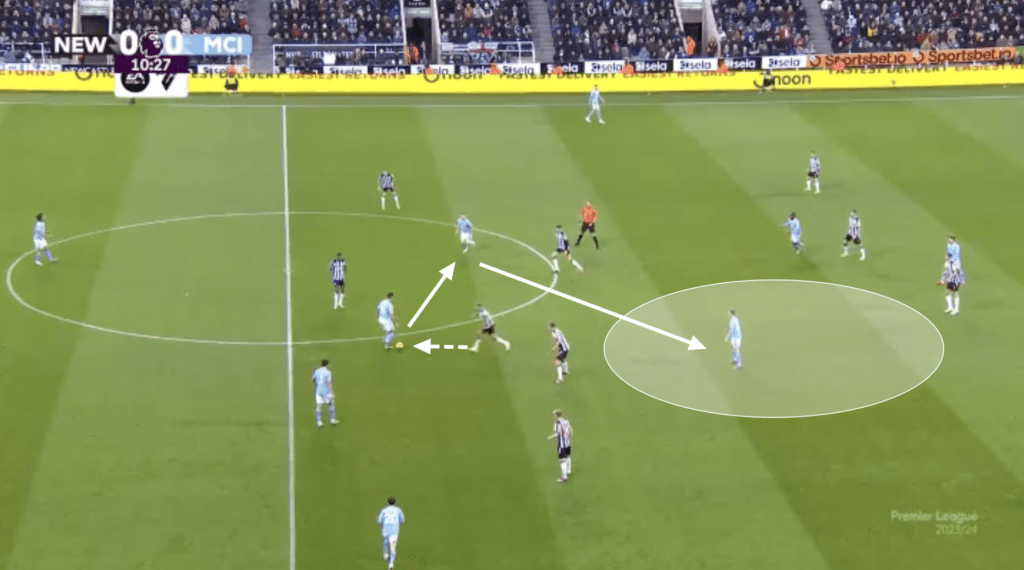
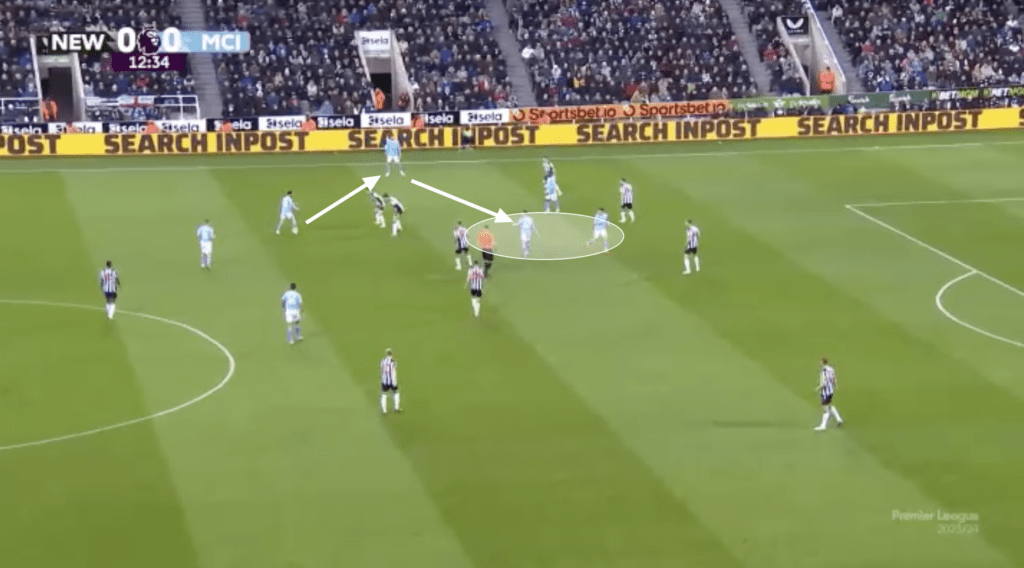
High press
Man City tried to press Newcastle high whenever they could and would do so in a 1-4-4-2 formation. However, because of Newcastle‘s lack of build-up, they did not get the chance to press.
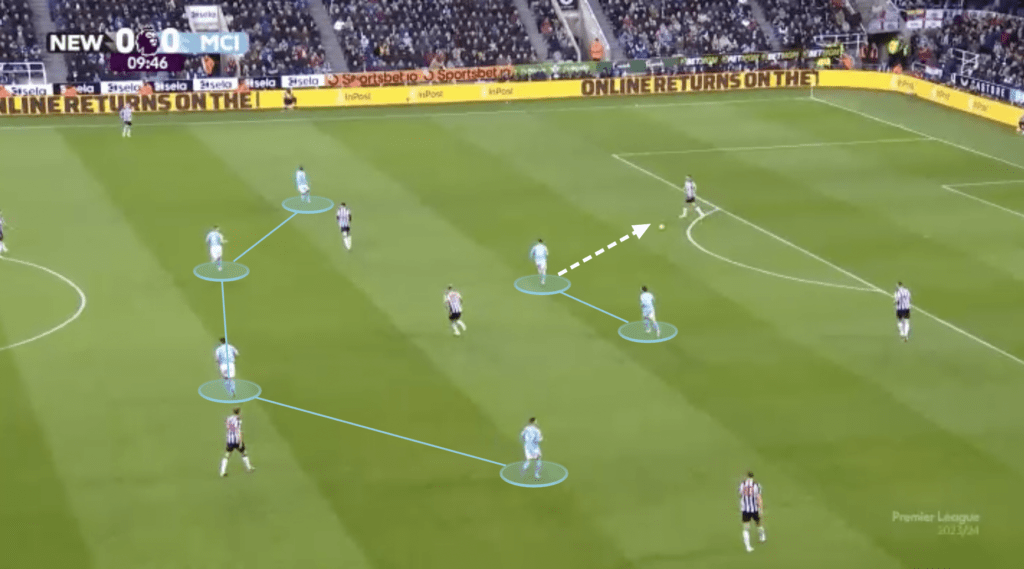
Transitions
Man City were, apart from a few crucial sequences, good in the defensive transitions and often regained possession quickly after losing it. Their central numerical advantage enabled them to apply pressure with two or more players immediately after losing the ball.
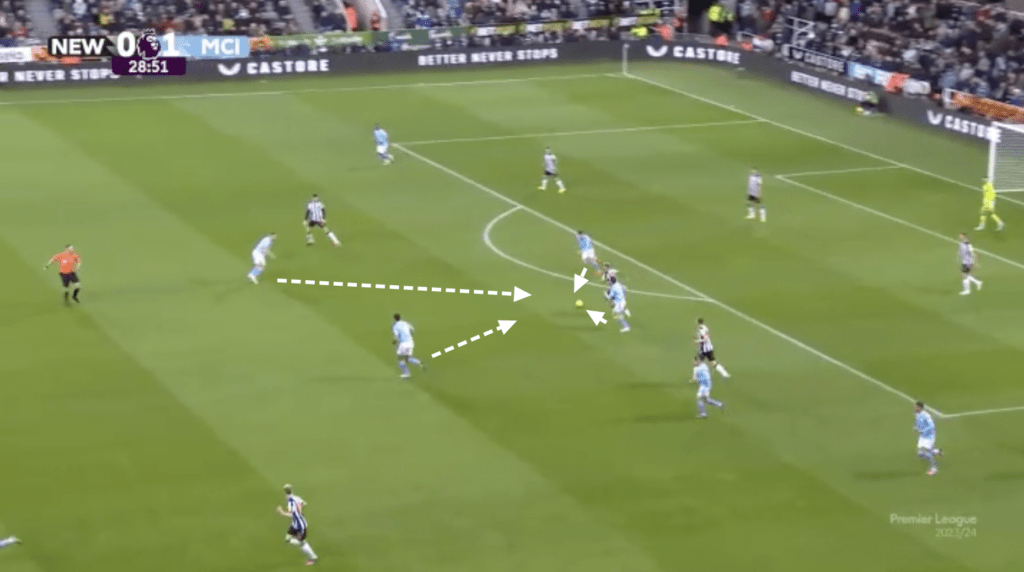
Between minutes 30 and 40, the level of Man City‘s defensive transitions dropped dramatically, making them concede two quick goals. They were not fast enough to win the first ball, and after that, they barely ran back to defend the counterattack and left enormous spaces for Newcastle to exploit.
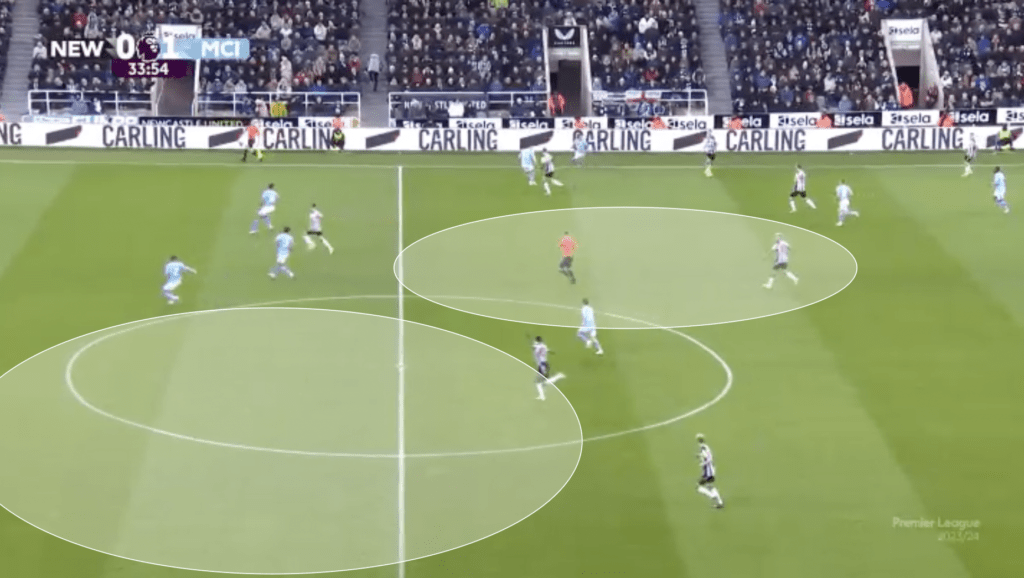
In the offensive transitions, Man City would recycle the ball and rarely tried to counterattack Newcastle.
Issues
Man City‘s greatest issue was the defensive transitions between minutes 30 and 40, causing them to concede the two goals. The other problem they had were that they sometimes had difficulties in breaking down Newcastle‘s defense.
Final Thoughts
In this comprehensive tactical analysis of the enthralling clash between Newcastle and Manchester City, the intricacies of both teams’ strategies have been laid bare. Newcastle, with their solid low press and successful high press, posed challenges for the reigning champions. However, issues in ball possession and struggles against City’s counter-press unveiled vulnerabilities.
Manchester City, employing a well-executed low and high build-up, showcased their numerical advantage and intricate third-man combinations. Despite moments of defensive transition lapses, City’s overall control of the game was evident. Yet, challenges in breaking down Newcastle‘s steadfast defense and a brief defensive lapse allowed the Magpies to capitalize.
This tactical breakdown unravels the dynamic chess match played out on the field, highlighting the strengths, weaknesses, and pivotal moments that shaped the captivating encounter: Newcastle vs Man City 13/1 – 2024.
